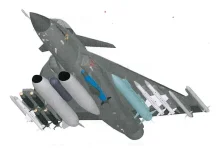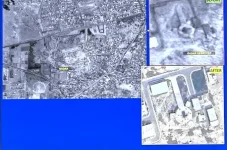- Views: 219
- Replies: 1
The Pakistan Air Force (PAF) is reportedly contending with significant weaknesses in its air defence capabilities following a series of precision strikes by the Indian Air Force (IAF). The operation, codenamed 'Operation Sindoor', was conducted between May 7 and May 10, 2025.
Information circulating on social media platform X and various media outlets suggests that these actions have resulted in a 20-30% degradation of Pakistan’s early warning systems, creating substantial gaps in its ability to monitor and protect its airspace.
This development has reportedly compromised Pakistan's capacity to detect and respond effectively to aerial threats and has brought into question the dependability of its military infrastructure, which has seen significant support from Chinese technology.
Operation Sindoor was initiated as a retaliatory measure following the Pahalgam terror attack on April 22, 2025, in Kashmir, which resulted in the deaths of 26 civilians, predominantly tourists. India attributed responsibility for this attack to terror groups based in Pakistan, leading to a rapid and coordinated military response.
Over the four-day period, the IAF targeted crucial PAF airbases, radar installations, and command and control centres. Among the locations reportedly struck were Nur Khan in Rawalpindi, Bholari in Sindh, Sargodha, and Jacobabad.
The operation involved the use of advanced weaponry, including BrahMos supersonic cruise missiles and SCALP long-range cruise missiles, complemented by loitering munitions and decoy pilotless aircraft designed to overwhelm Pakistani air defences.
The Indian Air Force's strikes were carefully planned to disable significant portions of Pakistan's air defence network. Satellite imagery and media accounts have corroborated extensive damage to PAF infrastructure. This includes cratered runways, destroyed aircraft hangars, and incapacitated radar systems.
A particularly significant loss for the PAF was a Saab 2000 Erieye Airborne Early Warning and Control (AEW&C) aircraft, a vital asset for maintaining situational awareness of airspace, which was reportedly destroyed in its hangar at Bholari airbase. This, along with the reported destruction of ground-based radar facilities in Punjab, Lahore, and Karachi, has severely impaired Pakistan’s capacity to monitor its own territory.
This degradation of assets has reportedly forced the Pakistan Air Force into a more defensive operational stance. Aircraft have allegedly been relocated to bases further from the border, and operational capabilities have been limited by damage to runways.
Sources cited by the Times of India indicated that the Pakistani air command structure was left in a state of confusion, struggling to accurately assess the situation or detect incoming threats.
Furthermore, the reported failure of Chinese-supplied HQ-9 air defence systems to intercept Indian missiles and drones has been highlighted as a point of concern for both Pakistan and its primary military hardware supplier, China.
The Indian Air Force's capacity to inflict such widespread damage, with India’s Press Information Bureau claiming the destruction of nearly 20% of PAF infrastructure, has brought attention to the vulnerabilities in Pakistan's ongoing military modernization efforts.
Pakistan has made substantial investments in Chinese-manufactured fighter aircraft, such as the JF-17 and J-10C, and air defence systems like the HQ-9. China accounted for over 80% of Pakistan's arms imports between 2019 and 2024.
However, the reported ineffectiveness of these systems against the Indian strikes has underscored a potential technological disparity, potentially weakening Pakistan's overall deterrence capabilities.
The financial implications of rebuilding the damaged PAF infrastructure are expected to place additional strain on Pakistan's already challenged economy. The cost of repairing runways, replacing destroyed aircraft, and restoring early warning systems is projected to run into billions of dollars. This represents a considerable burden for a nation currently addressing a significant debt crisis.
This operational setback, described by some sources as causing a "five-year degradation" of PAF capabilities, may necessitate Pakistan seeking further financial assistance from China, potentially increasing its economic reliance and affecting its strategic independence.
Operation Sindoor has showcased India's developing military capabilities and its readiness to undertake escalatory actions in response to perceived provocations, even within the context of a nuclear-armed rivalry.
By targeting high-value assets such as AEW&C aircraft and critical radar systems, the IAF has not only diminished Pakistan's air defence capabilities but also conveyed a clear strategic message regarding India's reach and capacity to strike deep within Pakistani territory.
Prime Minister Narendra Modi's prior assertions that Indian forces possess the capability to strike any part of Pakistan have, through this operation, been demonstrated on the battlefield, likely compelling Pakistan's military leadership to reassess its strategic posture.








